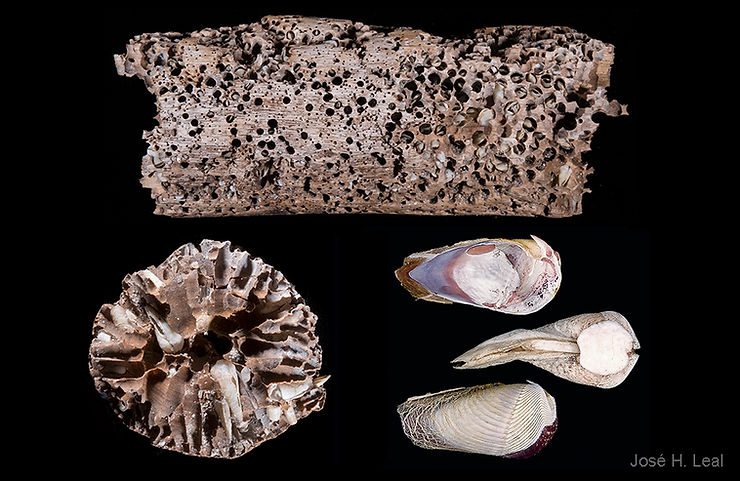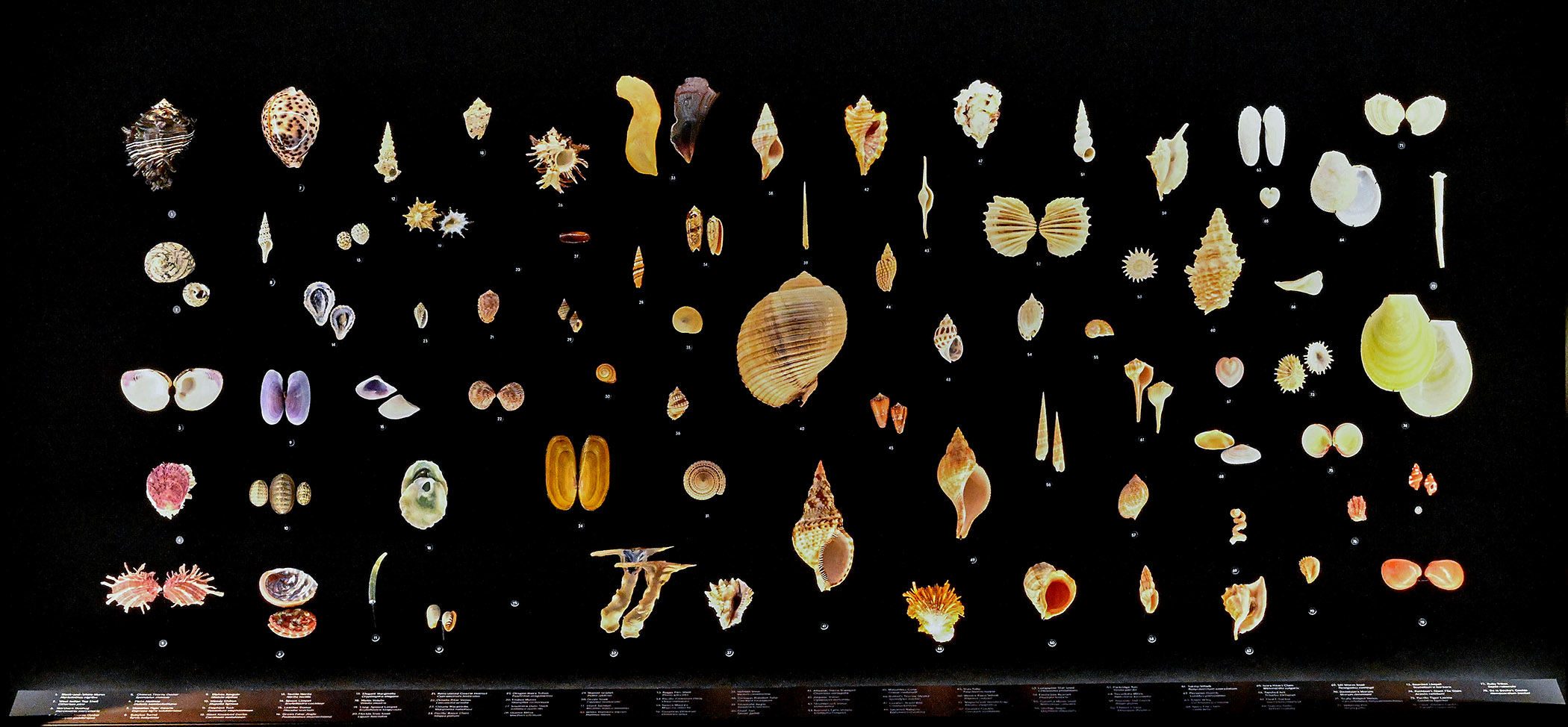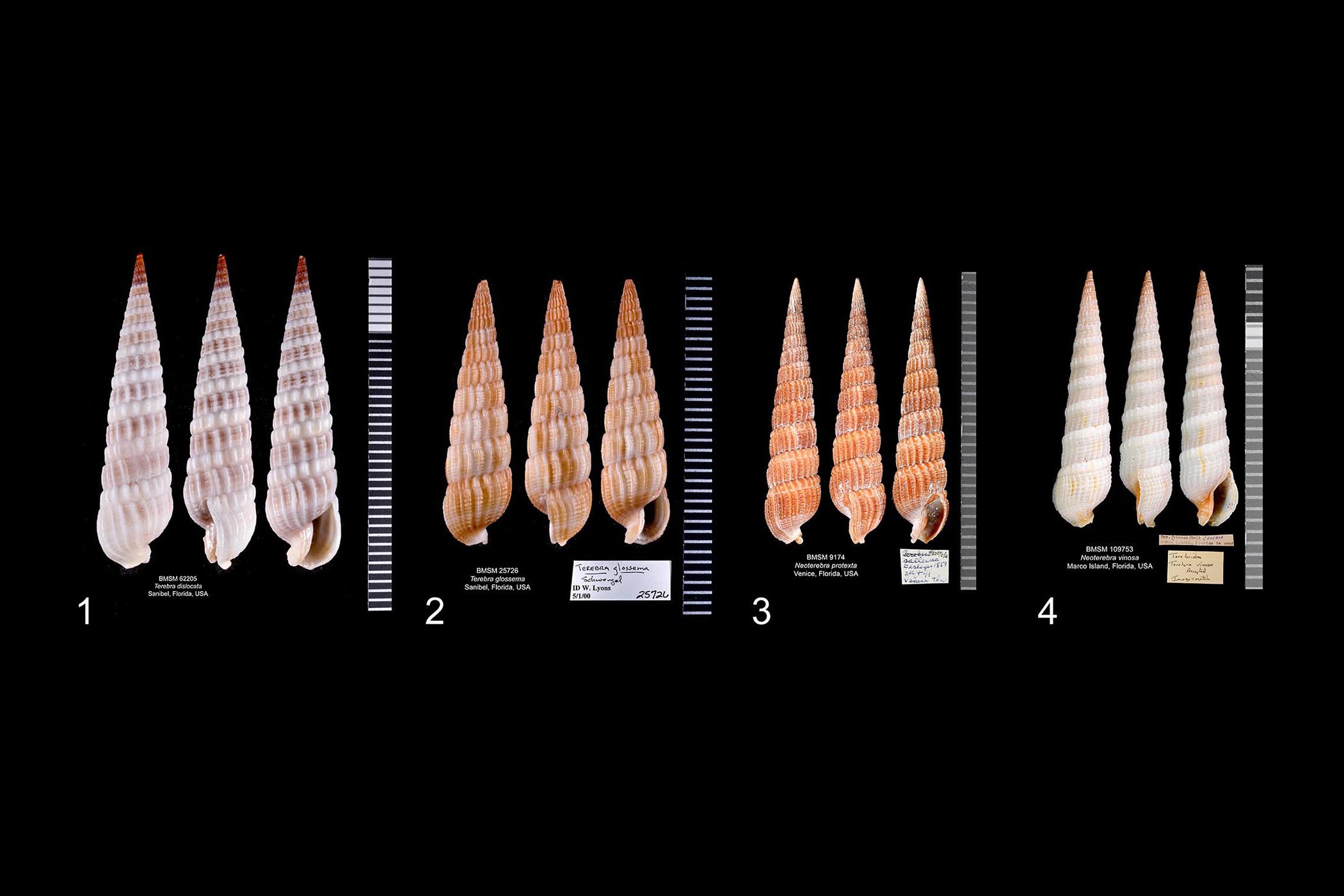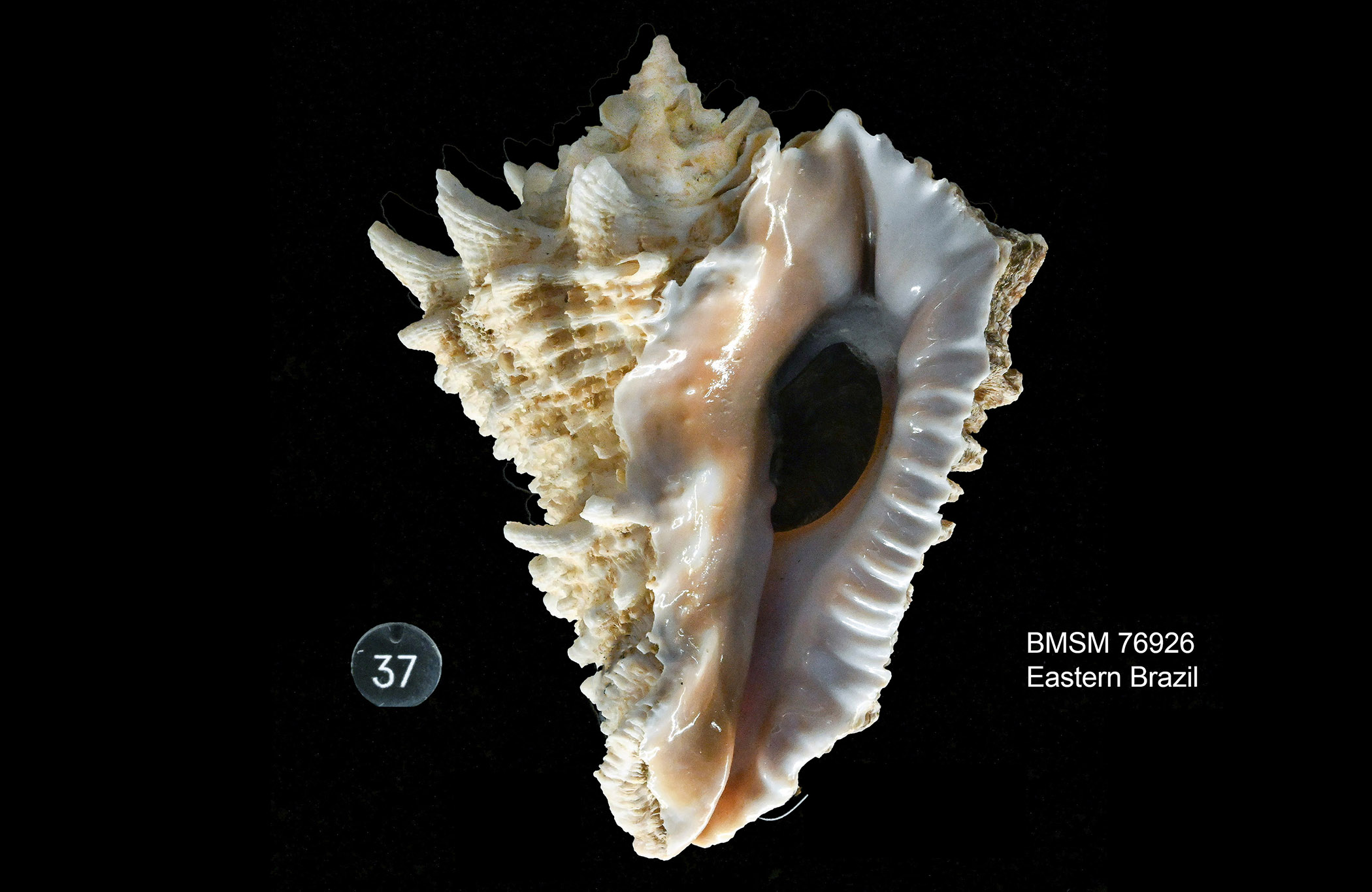The Striate Piddock, Martesia striata (Linnaeus, 1758) is one of the species of wood-boring bivalves found along the coast of SW Florida. Its shells may be found on local beaches, always confined to pieces of driftwood, such as the little (11 cm, or about 4.5-inch) log in the top part of the picture. The log is riddled with the remnants of a few hundred Striate Piddocks. They may grow to be more than an inch long, and have free-living larvae that live in excess of a month drifting in the ocean. With luck, the larvae will find a piece of wood to settle on and bore into. Each small orifice on the log indicates the presence of one piddock. As the bivalve grows, it keeps boring perpendicularly to the wood surface, and the resulting burrow, teardrop-shaped and circular in cross-section, will be the bivalve’s dwelling for its entire life. Through the orifice, the piddock pulls water in to filter-feed on microalgae. Read more about local and non-local mollusks and their shells at https://shellmuseum.org/shell-guide.
 Driftwood and Striate Piddocks found on Bowman’s Beach, Sanibel Island, Florida. Clockwise from top: Side view, three views of the shell, and cross-section showing the placement of piddocks inside the log.
Driftwood and Striate Piddocks found on Bowman’s Beach, Sanibel Island, Florida. Clockwise from top: Side view, three views of the shell, and cross-section showing the placement of piddocks inside the log.
#striatepiddock #martesiastriata #pholadidae #driftwood #sanibel #boringbivalve


